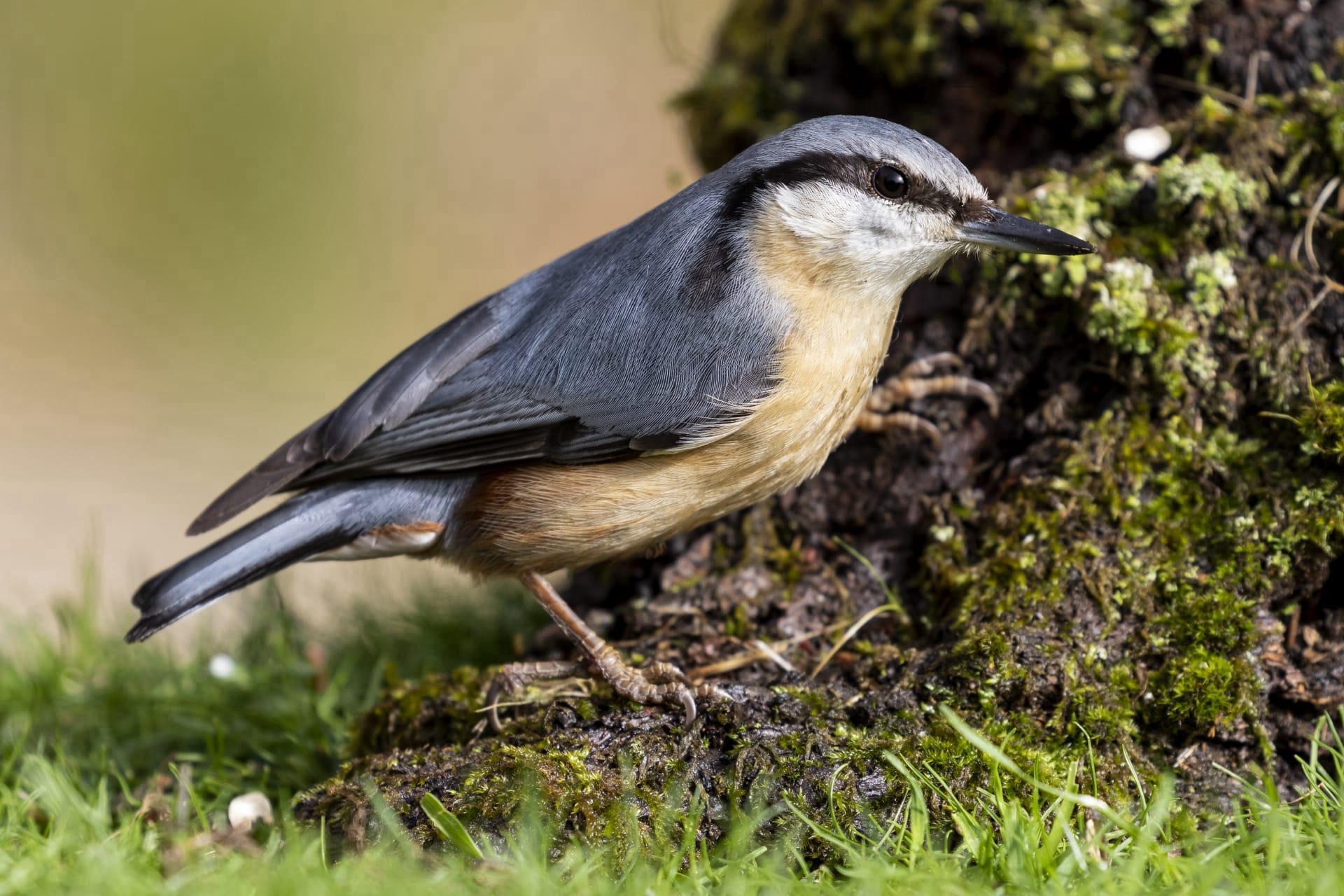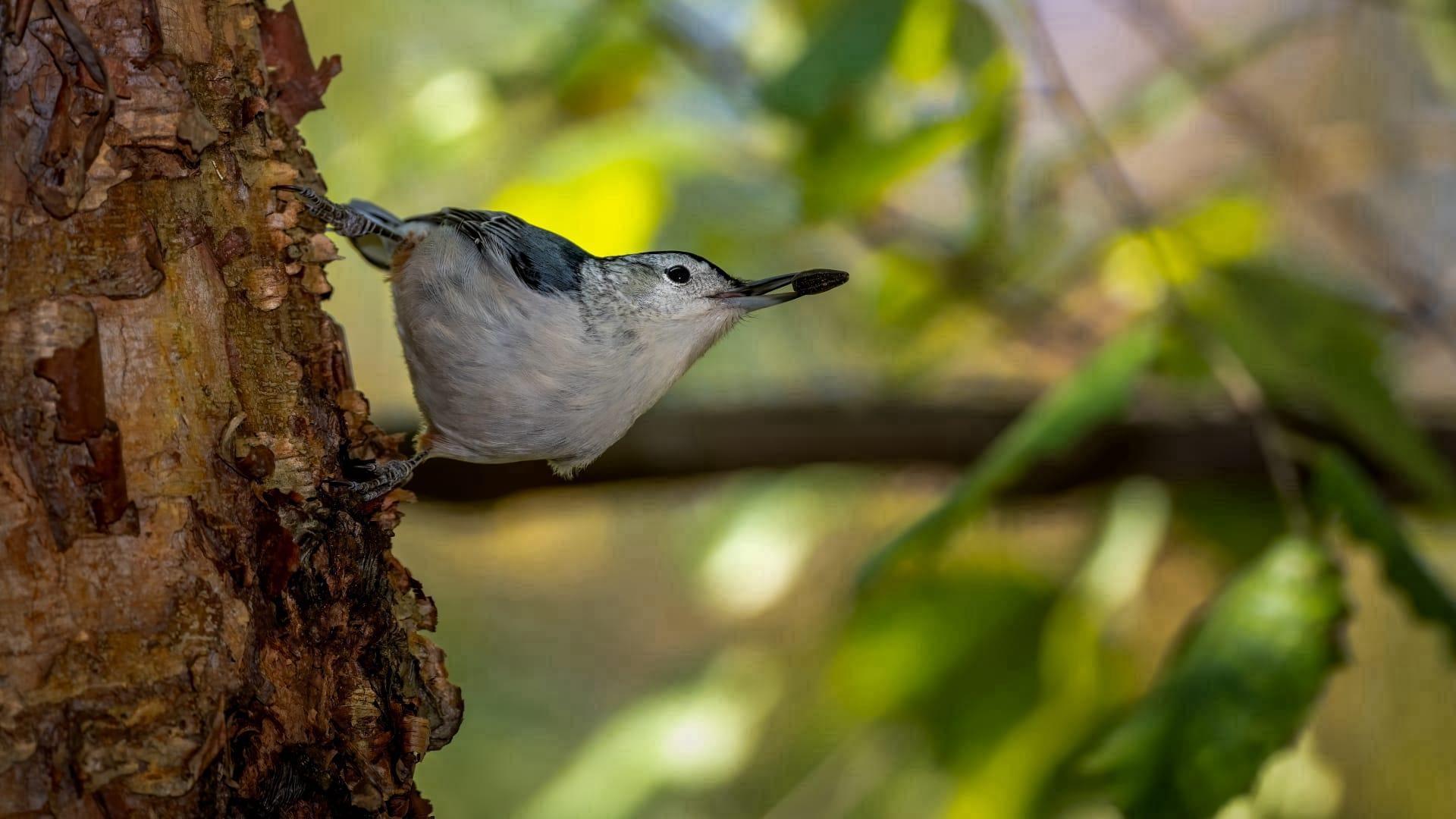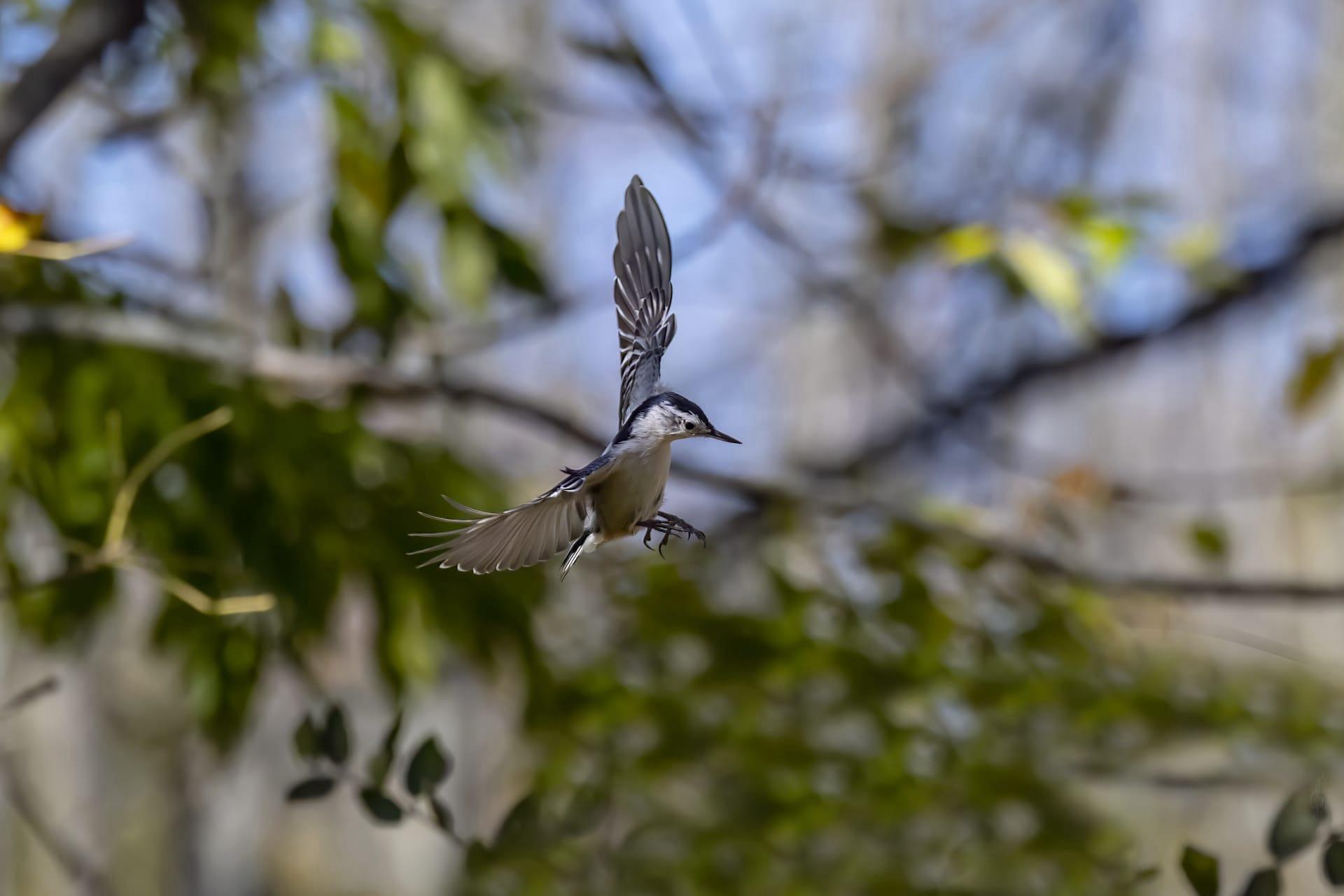Nuthatch Characteristics
- Home /
- Mini Encyclopedia /
- Animal /
- Nuthatch Characteristics
1
Nuthatches, charming small to medium-sized birds, are a delight to observe. Their size typically ranges from 3.5 to 8.7 inches in length, a modest scale in the avian world. Interestingly, their weight is just as light, hovering around 0.63 to 1.06 ounces. Nuthatches are known for their longevity, with an average lifespan in the wild of about 2 years, although some can live up to 12 years in optimal conditions.
One of the most distinctive organs of the Nuthatch is its powerful beak. This beak is not just a simple tool but a multifunctional device critical for their survival. It is relatively long, strong, and slightly upturned, adapting perfectly to their feeding habits. Nuthatches use their beaks to skillfully pry open tree bark to access insects hidden inside. This beak is also adept at cracking open seeds and nuts, a staple in their diet. Its strength and precision are crucial for both foraging and nesting, as Nuthatches are known to carve out nest holes in trees or use crevices in trunks, utilizing their beaks as chisels.

2
Question: What do Nuthatches eat and how do they store their food?
Answer: Nuthatches have a diverse diet, primarily consisting of insects, seeds, and nuts. They are particularly fond of beetles, caterpillars, and spiders. For seeds and nuts, Nuthatches show a remarkable behavior – they store them for later consumption. They jam their food into tree bark crevices and then hammer it with their strong beaks to split it open. This behavior, known as 'caching,' helps them survive during scarce food periods. Their food storage sites are often revisited, showcasing their excellent memory and survival strategies.

3
Nuthatches exhibit unique locomotive behavior. They are among the few birds capable of descending headfirst down tree trunks. This unusual movement is facilitated by their strong legs and feet, with large, curved claws ideal for gripping bark. Unlike woodpeckers that use their tail as a support, Nuthatches rely solely on their feet for balance and movement, enabling agile navigation on vertical surfaces.
In terms of hunting, Nuthatches are both active and strategic. They forage along tree trunks and branches, probing into crevices with their sharp beaks to extract insects. Their agility allows them to explore various angles and surfaces, making them efficient hunters. During foraging, they often join mixed-species feeding flocks, showcasing a cooperative aspect in their behavior, which increases their chances of finding food while reducing individual predation risk.

4
Nuthatches are typically found in woodland areas, thriving in both deciduous and coniferous forests. They favor habitats with plenty of trees, as these provide essential resources for feeding, nesting, and protection. Some species are also known to adapt to urban environments, visiting backyard feeders. Their choice of habitat is closely linked to the availability of their food sources and suitable nesting sites.
When it comes to reproduction, Nuthatches are monogamous and often mate for life. They nest in tree holes, sometimes ones they excavate themselves or old woodpecker holes. These birds line their nests with soft materials like feathers, fur, and pine needles. Females typically lay 5 to 9 eggs per clutch, with both parents sharing incubation duties. The chicks are altricial, meaning they are born blind and featherless, and require significant parental care before fledging.

5
Book: "The Secret Life of Nuthatches" by Emily Harrington, published in the United States in 2018. This fascinating book delves into the unique behaviors and habits of various Nuthatch species across North America. Harrington’s writing is engaging and informative, providing insights into the ecological roles and adaptability of these birds. She combines scientific research with anecdotes from bird watchers and her own observations, making it a captivating read for both ornithologists and bird enthusiasts.
Book: "Nuthatches: A Global Perspective" by Jonathan King, released in the United Kingdom in 2020. This comprehensive guide explores Nuthatch species around the world. King, an avid birdwatcher, provides detailed descriptions of each species, their habitats, feeding habits, and conservation status. The book is richly illustrated, offering readers a visual journey through the lives of these intriguing birds. It's an excellent resource for anyone interested in expanding their knowledge about the global diversity of Nuthatches.